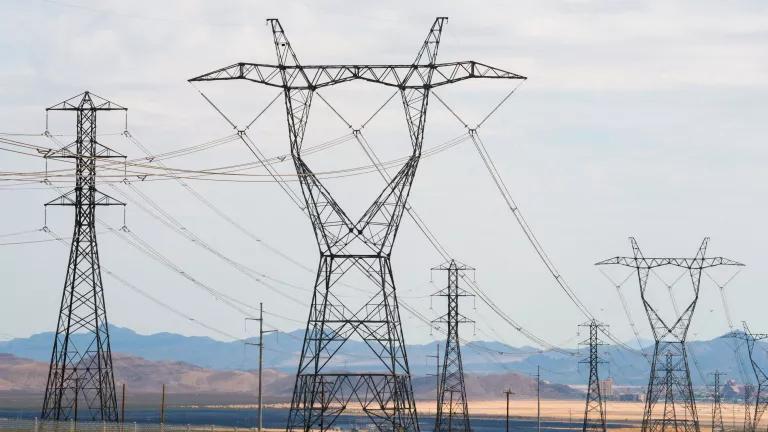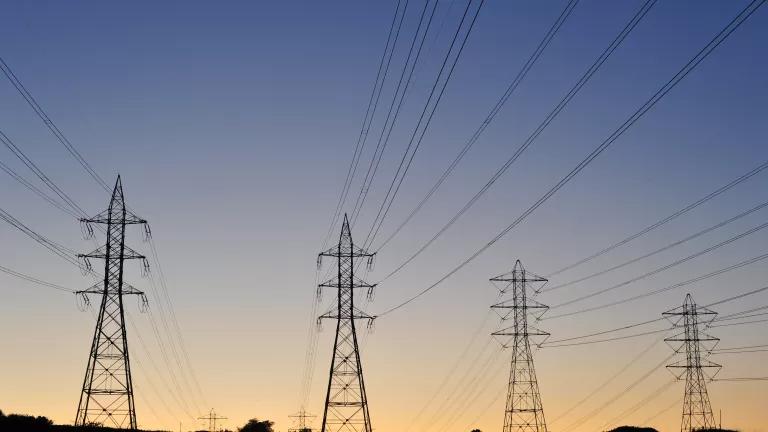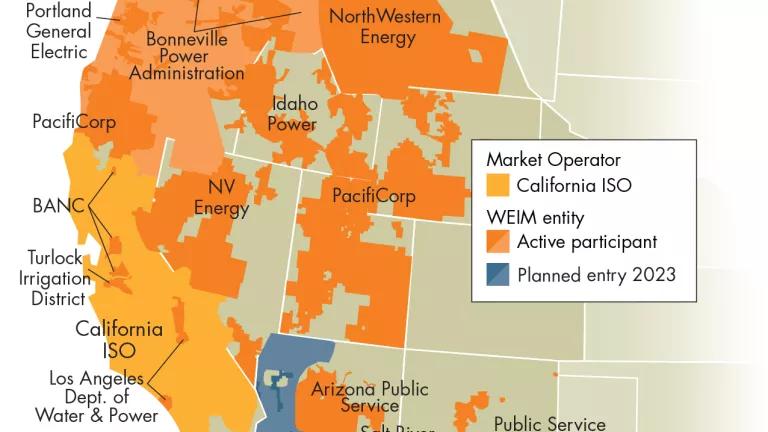The wind blows stronger in Wyoming than in California and a new study concludes that incorporating its power into the Golden State’s electricity system will produce significant financial and environmental benefits for Californians and the environment.
Specifically, the University of Wyoming analysis found that integrating the wind energy generated hundreds of miles away into California’s bulk electrical grid operated primarily by the California Independent System Operator Corporation will reduce system volatility and the need for standby gas-fired generation to supplement clean, renewable energy.
This could produce millions of dollars in annual savings for utilities (and their customers) while preventing almost 700,000 tons of carbon pollution, according to the report.
It also would help California meet – and exceed -- its Renewables Portfolio Standard requirement of having 33 percent of utility electricity sales coming from clean, renewable sources by 2020, the report said. The RPS, one of the world’s most ambitious renewable energy programs, mandates enough clean energy to power nearly 9 million homes by 2020, but also set intermediate targets of 20 percent for 2011-2013 and 25 percent by 2014-2016.
The California-Wyoming wind diversity study, which was conducted by the university’s Wind Energy Research Center and commissioned by the Wyoming Infrastructure Authority, included an analysis of atmospheric data that reconfirmed Wyoming’s wind resources are stronger than those in California (generating in excess of 40 percent of the time) and greatest in the late afternoon and early evening -- the period when California most needs power.
However, this is also the time when solar supplies are declining so the California ISO system typically ramps up its “dispatchable” natural gas-fired generation to compensate, which also generally reflects the highest “peak power” pricing.
The UW researchers analyzed a scenario with 6,000 megawatts of California wind with a 25 percent capacity factor, a scenario requiring the California ISO to use the dispatchable natural gas-fired generation to serve the customer load. Researchers then looked at what would happen when combining 3,000 megawatts of California wind with 3,000 megawatts of Wyoming wind and found it would mitigate the need for back-up generation.
The analysis says that if the avoided generation is valued at $50 for megawatts per hour, the savings would total almost $100 million a year and also lead to lower emissions on the order of approximately 700,000 annual tons of carbon dioxide pollution.
Getting Wyoming’s wind energy to California could happen with completion of one or both of two transmission projects under development. One of them, the 725-mile TransWest Express Transmission Project between south-central Wyoming and the California ISO connections at Marketplace Hub in the Eldorado Valley near Boulder City, Nev., would offer 3,000 megawatts of capacity. It also is one of seven projects chosen by the federal government’s Rapid Response Team for Transmission for streamlined permitting, putting it into service by 2017 – ahead of the Renewables Portfolio Standard deadline. This line plans to maximize the use of existing corridors and rights of way along its route .
The other is the Zephyr Transmission Project, which could deliver as much as 3,000 megawatts of capacity to California via the Eldorado Valley. It would begin in eastern Wyoming. It is not projected to go into service until 2020.
The wind diversity analysis will be formally presented next month at the Wyoming Infrastructure Authority’s winter board meeting, but its board already has authorized another study that will compare actual minute-by-minute multi-year wind data for both states.
Meeting the climate challenge will require massive amounts of renewable power and heroic levels of energy efficiency and demand side programs to make the grid more efficient. But projects like these have their place too: to lower costs and ease the reliable addition of renewable power as we decarbonize our economy and modernize and make our transmission system more flexible.



